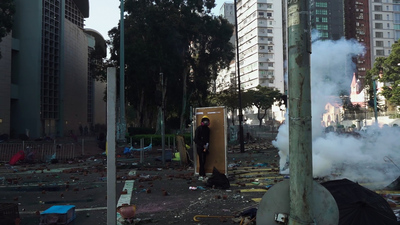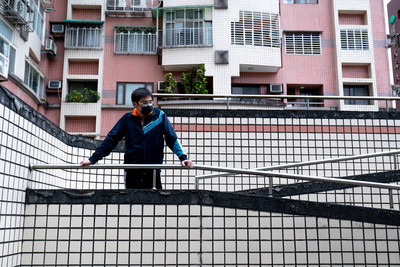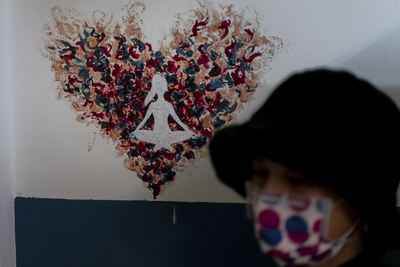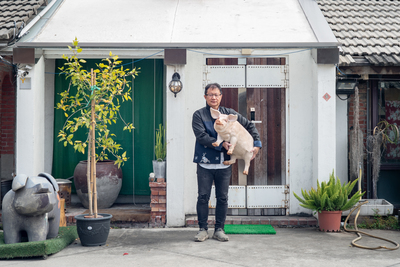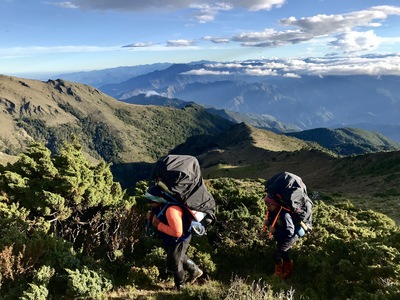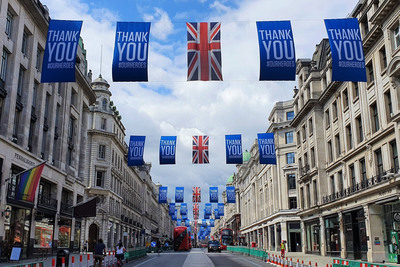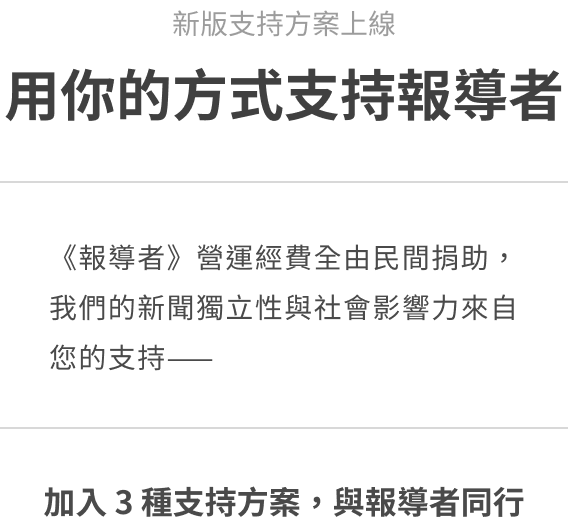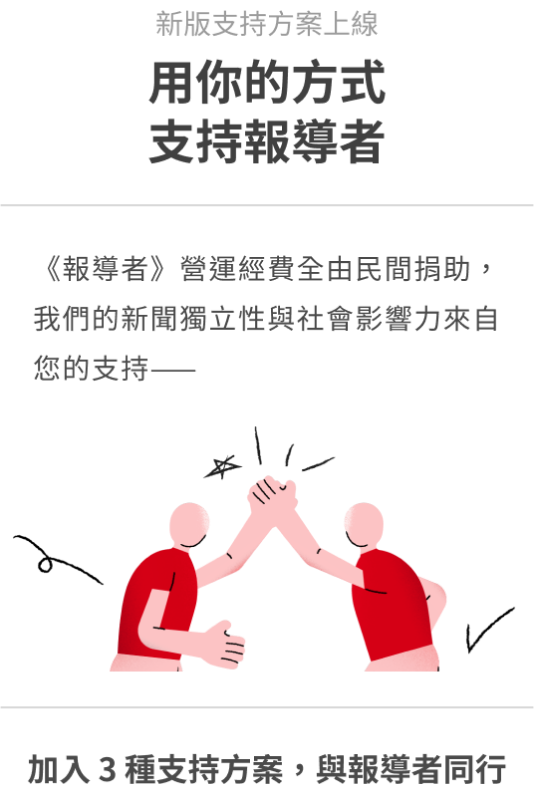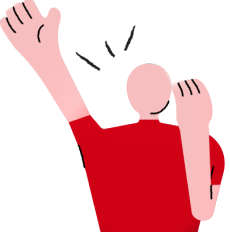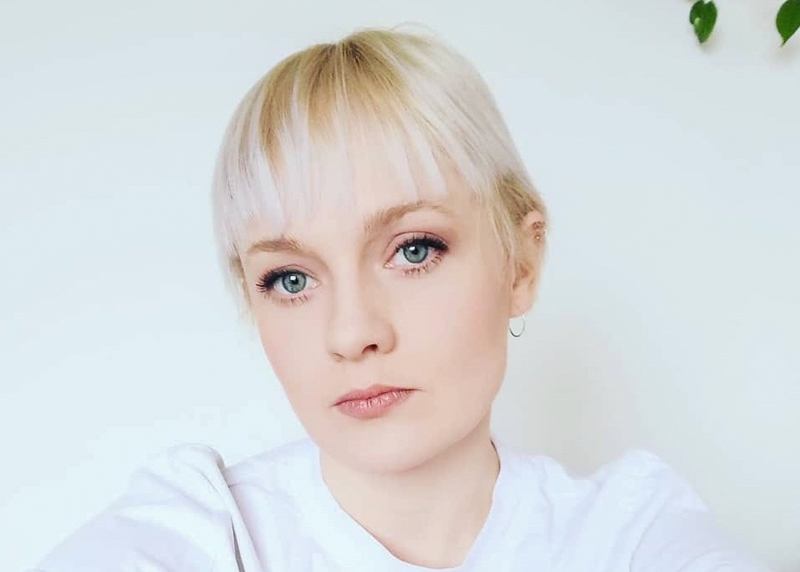
"In a year of social distance, life was lived through the frame of a screen."
For much of my 2020, the only reminder of a reality beyond the view from my apartment window was to be found in the flickering pixels of a screen. Amsterdam, like most of Europe and much the world, spent the majority of the last year under some degree of lockdown. Although these were certainly extreme circumstances, this armchair existence was not as much of a change for me as it might have been for others. In any given year, it is quite normal for me to spend many hours discovering the world through the lenses of others in my work as a documentary film programmer, which requires me to watch hundreds of documentaries from almost every corner of the globe.
But this is where the similarity of my 2020 to pre-pandemic era times ends, because in every other aspect of my professional life, this was far from an ordinary year. The pandemic brought disruption to the foundations of our global economy, bringing its basic principles into question, and the film industry has not escaped a seismic shaking of its infrastructure and spirit.
At the International Documentary Film Festival Amsterdam (IDFA), the world’s largest festival for non-fiction film, my work revolves primarily around the curation of the annual line-up of the best new documentaries the world has to offer. In a typical year, the 12-day festival screens around 300 films - selected from thousands of submissions - on dozens of screens across the city, many of them premieres, and sells around a quarter of a million tickets to cinephiles from far and wide. It has a big industry presence for the industry-oriented events, including a forum for pitching projects to financiers, a market, networking events, talks, and many other activities that make it a main event on the calendar for the international documentary film community to gather to celebrate and progress the medium.
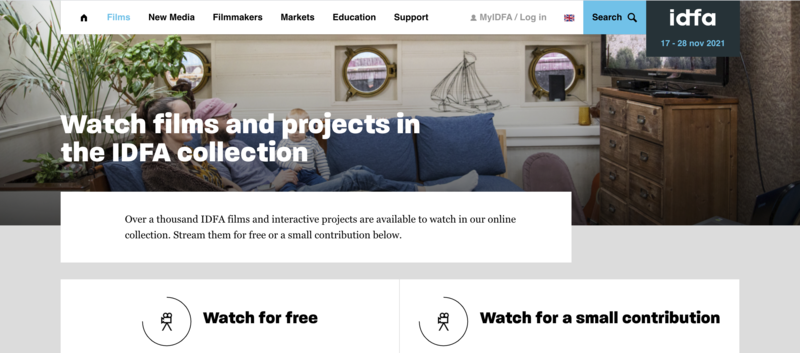
But with cinemas either closed or able to open only with very limited capacity, it was apparent from early in the year that our December festival would not look at all like we were used to. With most people across the Western world trapped at home, the big American streaming platforms saw exponential growth. Netflix, for example, saw an increase of 26 million subscribers in the first half of 2020, pushing out cult hits like the ethically questionable true-crime doc series, Tiger King.
On the other hand, film festivals, an essential node in the political economy of independent filmmaking, had to scramble to create a digital home for less commercial kinds of film that usually rely on networks of smaller cinemas for their audience and revenue – cinemas that currently remain shut across most of this continent. IDFA moved the majority of its offer online (except for a small number of low-capacity screenings), an unfamiliar situation for an event that is so used to bringing a hugely diverse group of people together to exchange ideas and be inspired by independent, creative documentary.
Of course, there are many things to mourn about this state of affairs, but as with almost everything, the effects of this forced radical change have been complex and varied. The sudden pressure has opened any small cracks that already existed in the film industry into wide fissures, like clay pots in a hot oven. It has accelerated a reckoning with old habits that die hard. It has shown us both the fragility and importance of the work of creating platforms for voices and stories that are outside of or opposed to the mainstream. It has revealed both the pitfalls and the opportunities of this brave new world we didn’t choose - more digitally connected, but physically separate – and it is too soon to know where this is all going to lead.
In a normal year, the work of an IDFA programmer would involve a lot of travel, venturing out to meet filmmakers from a diversity of cultural contexts, reaching out to form new global connections of like-minded truth-tellers with a common goal of creating compassion, confronting injustice, and appreciating the truth and intricacy of this planet we live on by capturing it in the form of image. This year was one of remote connection, of touching across a distance through Zoom calls and live streams, which is certainly more carbon-efficient when compared to the numerous and polluting long-distance flights that have until now been accepted as unavoidable in sustaining the film community – an elephant that has been growing bigger and bigger in the room as climate change becomes an ever more unavoidable truth.
Further, when our community becomes more virtual, we allow for greater inclusion of filmmakers who can’t travel to Amsterdam due to the difficulty of obtaining visas to cross increasingly impermeable European borders or can’t move from where they are for political reasons. But the virtual community that 2020 required us to build comes of course at the terrible expense of not encountering each other face-to-face, being able to shake hands, share meals, tell each other who we are while looking into each other’s eyes. Navigating these paradoxes will be at the heart of years to come.
Another paradox to emerge from 2020 is the strange contrast between a year that was extremely eventful at a macro-scale, while much of the microscopic aspects of daily life in Europe under lockdown were highly monotonous, unchanging, boring. In this extremely banal daily context, the work of documentary curation became a quite surreal experience, spending many hours watching films that touch on issues of the greatest magnitude in our global society, while it felt at the same time as though the world was standing still. At other moments, it offered an escape into worlds beyond – homes, lives, relationships – a reminder that I was not as alone as I felt, being a foreigner in a city far from my friends and family during a world-shaking event, and that life goes on even when you can’t see it from your immediate point of view.
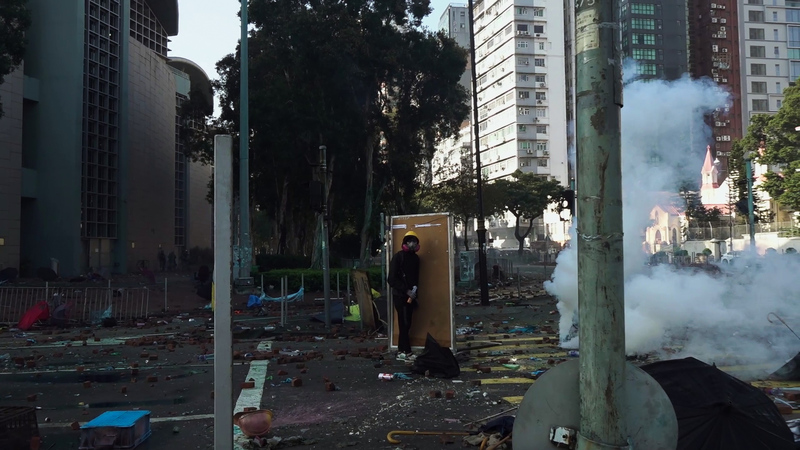
What makes this work especially interesting is the unusually wide vantage point on the world that it offers. The process involves seeing not only those films that ultimately make it into public view, but also many, many more that don’t - films that most people will never see. And from this perspective, what emerges is a sample of the zeitgeist. The films submitted to IDFA, when seen together, offered a deep human cross-section of our moment; not only of what is happening and the unfolding events of history, but also a more profound sense of humans’ preoccupations, worries and fascinations at a moment in time. Through their cinematic expression, patterns and themes emerge that say a lot about our communal unconscious.
The intensity of the selection process produces a powerful sense of simultaneity: an overwhelming awareness that so very much is happening all at the same time. In this crazy, busy, full world, around which we can never fully wrap our minds, it seems impossible to absorb how so many experiences of love, pain, frustration, bravery, joy, resilience and every other imaginable experience are taking place at any moment. But in this incredible variation is also a great sense of commonality. We are profoundly bound together, even when apart, as people trying to make sense of the world and find a place for ourselves within it, and, as coronavirus has clearly shown us, our fates are deeply interconnected.
If you allow me to zoom us out to a scale at which we can see the whole of Earth at once, like a shrunken globe, and then set it spinning, we might land a finger on a Romanian family struggling to adjust to city life after being forced from their off-grid existence (Acasă, My Home), or perhaps on a group of women in Peru providing comfort to one another as they seek justice for the sexual abuse they experienced when they were girls (Soldier’s Woman) .Spinning it once again, and we come to rest on a group of Parisian teenagers party until the early hours of the morning (Jungle). Even if these moments are not literally concurrent to the millisecond, at this level of magnification, it does not matter.
From here, we can see how so many individual threads intertwine to form the thicker cord of history. In 2020, holding and examining this cord in my hands revealed many, many reasons to be worried. But while I won’t use the word “hope”, because it too easily detaches from reality, I will say that there are still many beautiful things that survive and much potential for their proliferation, if we learn how to see, appreciate and amplify them.
Of the films that passed my way this year, it was striking how many of those completed just months before the pandemic had already started to seem as if they belonged to another era, like a dream from a different time. Some films, not even half a year old, showed a world that retrospectively feels naïve, characterized by a strange irony, with its subjects unaware of the impending catastrophe. This has the effect of making some stories seem almost trivial, while others more important than ever, highlighting the huge existential change that the virus has brought upon us, as well as the more urgent or universal themes that endure despite the chaos around us.
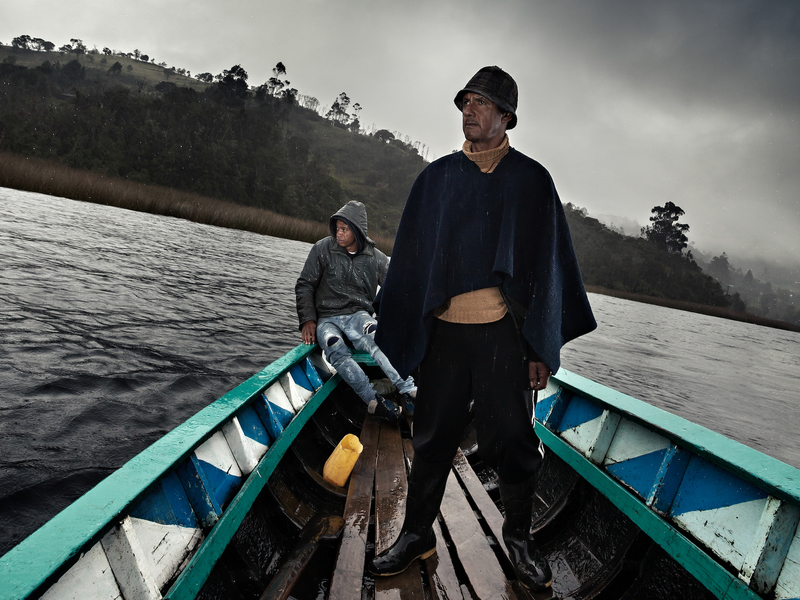
In the latter category is certainly the way we are treating the natural world, and the terrifying dangers that we are unleashing upon ourselves and the rest of the beings that inhabit our planet by disrupting the delicate environmental balances on which our lives depend, the sickness of COVID-19 is only one of these. These frightening changes
are revealing themselves in every place we look – in our intimate spaces, in our communities, in our politics, in our landscapes and in our bodies.
Everywhere, we see the violence of extraction on our exhaustible planet, and on those who defend it – and a terrifying sense that we are reaching the point of no return. Spinning the globe once more under the finger, and landing it on Chile, one film (Arica) shows how toxic waste is illegally dumped by a Swedish mining company on the outskirts of a residential area, exposing many children to arsenic poisoning. Somewhere else, in Madagascar, local fishermen see the sacredness of their coastline and their livelihoods in peril as a result of an Australian company’s plans to build a port (Morning Star). These are not only political events, but intensely personal ones for those in their midst.
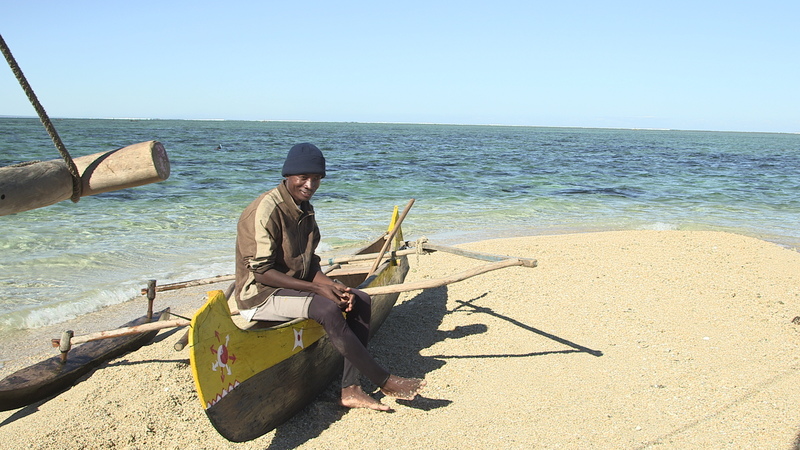
This exploitation has a direct relationship to imperialism, corruption and a political climate in which the line between business and government is blurring and those in power are becoming more aggressive in their desire for wealth and freedom to act without fear of reprisal. And the ordinary people by this system are intentionally fenced out of the possibility of any prosperity, or even basic well-being.
We see this in Jill Li’s epic and complex political documentary, Lost Course, which was recently awarded the great honor of Best Documentary at the prestigious Golden Horse awards. Shot over many years, we see the corrupting nature of power, as leaders of a valiant popular struggle to return land stolen by the government to sell to developers, become entangled in the same web of self-interest and ineffectuality they once criticized just as soon as they are elected to public office.
The idea that political leadership should be accountable to the people and in service of the greater good seems increasingly like a quaint anachronism: In the Democratic Republic of Congo, a group of disabled war victims travel hundreds of kilometers together to seek compensation for their debilitating injuries only to be treated like beggars by officials in suits on the steps of government buildings (Downstream to Kinshasa). Across the sea, in Iran, a man grieves for his girlfriend who perished aboard flight 752 after being shot down by Islamic Revolutionary Guard Corps, an act for which the government has barely taken responsibility (Dear Elnaz); in Mexico, a busload of young student teachers, are kidnapped and disappeared, and all signs point to the state collusion in the violence (Vivos).
The way we seek and access information through media is also undergoing significant change, and the battles that have been raging over the past couple of decades over the idea of truth (and “post-truth”) - brought on by huge technological change - have blossomed into a full-blown war of realities, in which words and images are weaponized in complex ways. In the Philippines, a fearless female journalist for an independent newspaper will not surrender in her criticism of the Duterte regime, resulting in repeated arrests and threats on her life, while Duterte hires scantily clad influencers to his in-house social media propaganda wing. In the USA, an unwitting comic book artist draws an innocent frog that becomes the symbol of the alt-right movement (A Thousand Cuts), and then travels across the sea to Hong Kong, where it can be spotted sprayed onto walls as a mascot of the massive pro-democracy protests in recent times (Feels Good Man).
It is here, in Hong Kong, that we see one of the clearer examples of the rise of a frightening authoritarianism and imperialism, including police forces that are becoming more militarized, and surveillance that is becoming more sophisticated. But here too is the place where we see most clearly the growing forces of resistance that are awakening and crystallizing into powerful new movements among young people in particular.
The Hong Kong Documentary Filmmakers are an anonymous group of filmmakers who understand that their power is in their collective action. In two excellent films, first with Taking Back the Legislature, and then with the slightly longer Inside the Red Brick Wall, they throw us into the heart of the democratic movement. While it is a thrilling watch, it goes deeper than spectacle, into an extremely brave, organized, but very egalitarian movement that is really an example for the kind of earnest struggle for freedom that will become more and more important as we move into the future, not only for those in the path of Chinese imperialism, but for the whole world.
They are not alone. From exile in London, a radical Belarusian theatre company exposes the injustice being experienced by young people imprisoned for standing up to a dictatorial regime in their country (The Okrestin Sisters), while a young woman in Algiers joins a record number of people as they take to the streets in protest against a fifth term for a president not fit for a new generation (Nardjes A).
And then, of course, there were the films about the pandemic. Given the time it takes to produce a film, by the later part of the year we were only just beginning to see the first ripples of what I am sure will become a tsunami of films that explore this event, which will remain of interest to historians for many future generations. Certainly, almost any documentary film, no matter the subject, that was still in the process of production at the start of last year will now be punctuated by the huge interruption of the virus. An early example is one beautiful Chinese film called The Ark, the early parts of the pandemic flicker in the background of delicate family moments as a matriarch dies from an unrelated condition – just a hint of something yet to come. And, of course, there were the lockdown films. Loved ones pointing cameras at each other, or their pets, with nothing better to do, and scenes from city apartment windows.
But then we began to see films that tackled the pandemic head-on. Because the virus hit first in China, this was also the place from where the first of these arrived. I saw a number of these. One film that showed a dramatically effective and well-coordinated government response and had a remarkable level of access unlikely to be available without at least some degree of cooperation with officials. This naturally raises some red flag questions about its political purpose. Another less complimentary film was removed from consideration for “technical reasons”. It is possible to read between the lines here, even from as far away as Amsterdam, that the representation of the nation’s reaction to the crisis is a matter of great political sensitivity and subject to exertions of official control.
In so many ways, the pandemic has been a generation-dividing event, with the older member of society so much more vulnerable. It has magnified an already clear fact that we are in the process of transitioning to a future that is letting go of many aspects of the past. This year presented so many stories that feel like farewells. In Japan, a group of odoriko striptease artists dance their dying analogue artform with an intimate grace, laced with melancholy (Odoriko). In Paraguay, a man records on fragile magnetic tape the voices of his people, slowly pushed out of their forest home by violence, deforestation and modernity. They will soon all be gone, along with the trees, and the river leaving nothing but the harsh, dry sun (Nothing But The Sun).
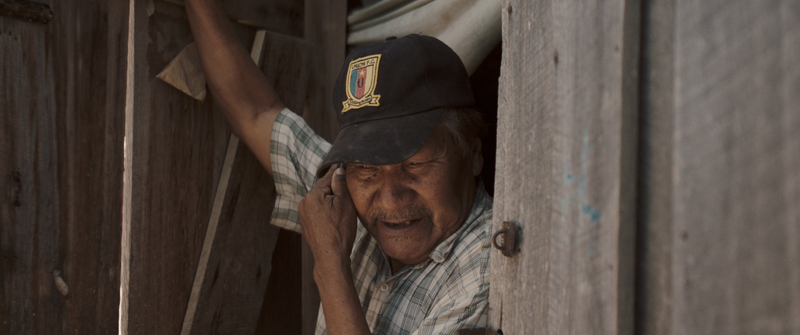
I will not resort to cliches and say that in such losses lie opportunities because, I don’t feel that way. We should understand their gravity, and not reduce them by flooding the vacuum they leave with superficiality. Such losses require us to contemplate with care – to appreciate what is of real value. We need to take on responsibility to act in ways that ensure that we are not haemorrhaging more goodness than this living, breathing Earth – filled with beings who deserve lives free of suffering – can take before the condition becomes terminal.
There are certainly some things we urgently need to leave behind us, relics of the past: racism, nationalism, imperialism, misogyny, homophobia, fossil fuels. But at the same time, there are also beautiful queer teenagers in Mexico, showing that there are alternative, gentler forms of inhabiting gender than the aggressive petro-masculinities that dominate our landscape (The Night Flowers), and people in Italy who love to come together to play music together despite having nothing in common except their love for a rock band (We are the Thousand), and a young black boy, adopted into an indigenous family in Colombia, who shows that difference in an ethnic identity can be experienced with love and kindness, without erasing its specificity (Between Fire and Water).
Witnessing the world in the particular way that I did in 2020, it is abundantly clear to me that these are the kinds of things we urgently need to nurture. No matter what we do, this earth will keep spinning, but ensuring that it is a fair, humane, free, healthy place for us to exist – the only place we have – it is up to us. We have to fight for it, and we do have the power when we understand that while we might be alone in the universe, but we are here in this world together.
To read the Chinese version of this article, please click:〈IDFA策展人莎拉・道森:從紀錄片看見時代的精神樣本,瘋狂與美麗同時發生〉
用行動支持報導者
獨立的精神,是自由思想的條件。獨立的媒體,才能守護公共領域,讓自由的討論和真相浮現。
在艱困的媒體環境,《報導者》堅持以非營利組織的模式投入公共領域的調查與深度報導。我們透過讀者的贊助支持來營運,不仰賴商業廣告置入,在獨立自主的前提下,穿梭在各項重要公共議題中。
你的支持能幫助《報導者》持續追蹤國內外新聞事件的真相,邀請你加入 3 種支持方案,和我們一起推動這場媒體小革命。

